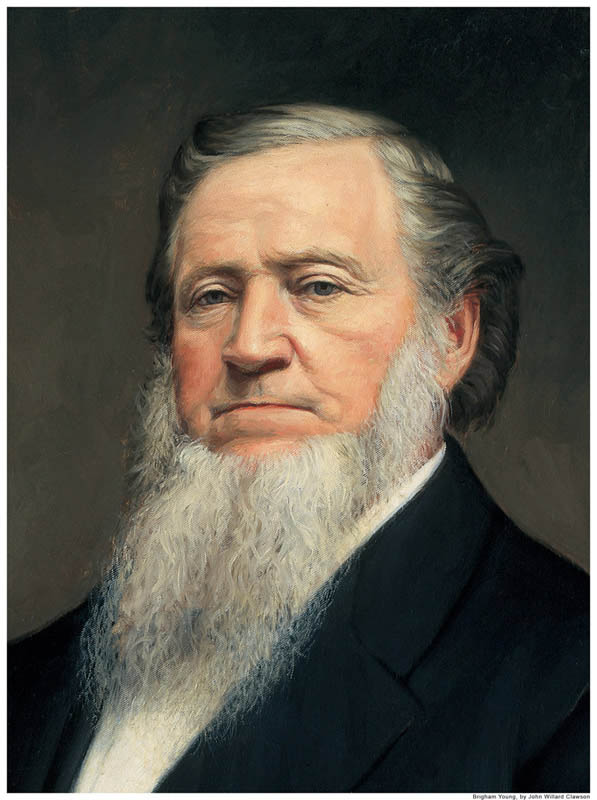 Polygamy, as practiced in the 1800’s, was very different from what we’re hearing about today’s FLDS practices, or even from what people imagine it was like in pioneer days.
Polygamy, as practiced in the 1800’s, was very different from what we’re hearing about today’s FLDS practices, or even from what people imagine it was like in pioneer days.
Members of the FLDS are assigned spouses by the leader of their Church. Brigham Young, who led The Church of Jesus Christ of Latter-day Saints in the pioneer years, did not select spouses for church members unless a family specifically asked him to assist them in the process. People married whomever they chose. Many women were the instigators, encouraging their husbands to take on additional wives.
Thirty percent of second or later wives were previously married. Polygamy offered more women the legal rights that came with marriage, as well as support for children from previous marriages. There were more women than men in the Church, and polygamy gave more women opportunities to marry, but also forced men who wanted second wives (or even first wives) to work hard to prove their worthiness and to treat current wives well, because women had a large number of men to choose from. Since marriages were not assigned, men had to prove themselves worthy of the women they wished to marry.
In addition, at that time married men were often sent away on missions, and polygamist wives had the support of the other wife in managing financial issues, parenting, and assuaging loneliness. Immigrant women often found husbands through polygamist marriages, at a time when marrying outside one’s culture was uncommon, helping them more quickly assimilate or achieve financial stability. This happened because, unlike the situation in today’s polygamist societies, men actually had to compete for the available women.
Utah, surprisingly, had a very generous divorce policy for women, unusual in the United States at that time. Brigham Young disliked divorce, but he nearly always granted divorces to women who requested them. However, men who sought divorce were most often told to go back home and do a better job of caring for their families. As a result, women who entered into a polygamist marriage and then discovered they couldn’t adapt to it were permitted to leave.
Most plural marriages, as they were known to church members, included only two wives. Despite the publicity given to Brigham Young’s marriages, such large families were very rare, particularly since a man was required to care for his own families. It’s estimated that only one-third of marriageable Latter-Day Saint (LDS) women during this time were in polygamist marriages. It was never, in the Church’s practice, something all people were called upon to practice.
One interesting side effect of plural marriage in Utah was that because some homes had two wives, many of the pioneer women were free to attend college and choose careers if they wanted them, leaving the second wife to watch over the children and manage the home. In a time when women had few employment options, LDS women were able to pursue a wide variety of professional careers, including some who trained to become doctors and lawyers long before female doctors or lawyers were common. LDS women were allowed to vote in Utah until the federal government repealed suffrage when Utah became a state. At that time, leading LDS women went to work fighting for the right to regain the rights the Church had given them and the government had taken. Many were active in women’s rights organizations.
The first woman state senator in Utah was a polygamist wife named Martha Cannon. She was a doctor prior to and during her marriage, but it was her political career that gained her attention. She was a Democrat and won the election. Her opponent was a Republican—and her husband! Her goal wasn’t to win against him, but to have a platform to reform health care.
Emmeline B. Wells was a magazine editor and one of six wives of Daniel H. Wells. This was a happy marriage for her—she had been previously widowed, in another happy marriage—and for a time, she focused on her family. In time, however, she would become a magazine editor and a dedicated suffragette, traveling often to the nation’s capital to battle for women’s rights. She was actively involved in several national women’s rights organizations and a close friend of Susan B. Anthony.
These are only two examples of polygamist women who lived surprisingly modern lives as career women in a time when women were not supposed to have careers.
LDS women of the pioneer era were not meek, mild, or downtrodden. Their desperately difficult lives, in which they faced persecution, had extermination orders issued on their lives, saw their husbands and children murdered, and lost homes to persecutors, had made them strong. They were often called on to take on roles they never imagined before they joined the Church. The long trek to Utah had taught them to be independent and take on roles often filled by men. During the trek west under the command of Brigham Young, many of the men were eventually sent by the United States Army to join the Mormon Battalion during the war with Mexico, right in the middle of the journey.
The lives of most LDS women living in polygamist marriages were, like that of most LDS women, full, satisfying, and free.
To read more about the practice of polygamy in the early Mormon Church, go to Mormon-Polygamy.org.
